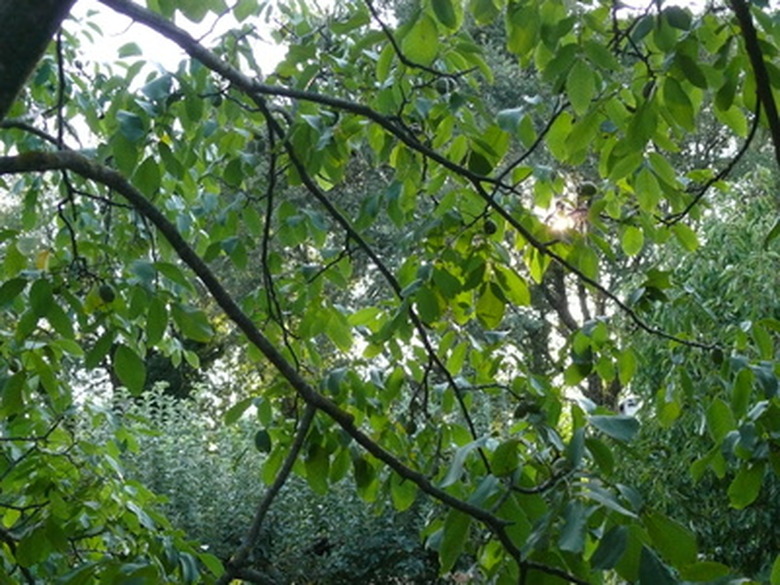Nut Trees For Illinois
Nut trees have many worthwhile attributes. They contribute to the nourishment of both humans and wildlife, they add to the beauty of our landscape and they produce lumber that is highly valued.
Illinois has a variety of nut trees growing throughout the state; some native and some transplanted. Located in USDA growing zones 5 through 7, the cooler climate regions of Illinois present ideal growing conditions for cold-hardy nut trees.
Black Walnut
Considered the most dependable nut plant for Illinois, the black walnut tree (Juglans nigra) is a much sought after hardwood. Black walnut trees generally grow in small groves and thrive in well-drained, moist, fertile soil conditions. Varieties of the black walnut are grown throughout Illinois. The Sparrow, Emma K. and Beck are found in all regions of the state. The Spark's 127, Hare, Farrington and Cranz are found in both the Central and Southern parts of the state. The Vandersloot variety is only found in Southern Illinois.
- Nut trees have many worthwhile attributes.
- Considered the most dependable nut plant for Illinois, the black walnut tree (Juglans nigra) is a much sought after hardwood.
Pecan
The large and attractive pecan tree (Carya illinoinensis) is a relative of the hickory. Nut production of the pecan tree is best when it is planted in fertile, river bottom soil. The hardy northern pecan is a native to Southern Illinois bottom lands along the Mississippi, Ohio and Wabash rivers.
Two groups of northern hardy pecans exist. Group 1 is made up of the Giles, Peruque and Major. Group 2 is the Colby and the Posey. Both groups are grown in Central and Southern Illinois. Northern Illinois does not have the proper climate for pecan trees.
- The large and attractive pecan tree (Carya illinoinensis) is a relative of the hickory.
- The hardy northern pecan is a native to Southern Illinois bottom lands along the Mississippi, Ohio and Wabash rivers.
Hickory
The tall, handsome Hickory (Carya) is a native Illinois nut tree. The shagbark and shelbark species and their hybrids are the best hickory nut for eating. Bitternut, mockernut and pignut hickories produce a splendid display of color in the fall, but their nuts are inferior in quality. Hickory trees thrive in soil that is light and well-drained. All species of the hickory are found in every part of Illinois. The shelbark species includes the Scholl and Ross. Shagbark hickory varieties are the Harold, Retzer, Anthony and Weschke. Hybrids of both trees are the De Acers and Stratford.
- The tall, handsome Hickory (Carya) is a native Illinois nut tree.
- Bitternut, mockernut and pignut hickories produce a splendid display of color in the fall, but their nuts are inferior in quality.
Chinese Chestnut
Chinese chestnut trees (Castanea Mollissima) are found growing in nearly every part of Illinois. The Chinese chestnut is highly resistant to chestnut blight; a disease that has nearly eliminated the American chestnut from it's natural habitat. Purchase Chinese chestnut seedlings at a nursery and plant them in areas where soil is rich, moist and well-drained. The Orrin, Nanking and Skookum variety of Chinese chestnut are best suited for Northern Illinois. Southern and Central Illinois are home to the Nanking, Crane, Meiling and the Orrin. Chinese chestnut seedlings are most often found in Central and Southern Illinois.
Filbert
Commonly known as hazelnut, the filbert (Corylus) is often mistaken for a small tree but it's really a multi-stemmed, large shrub. Generally found in moist, cool areas of Illinois, the filbert thrives in well-drained, slightly acidic soil conditions. The hardy filbert is a favorite choice of Illinois landscapers due to its attractive shape and brilliant fall colors. Northern Illinois is the home of the Winkler filbert. The Bixby, Potomac, Hall's Giant and Barcelona filbert are found in Central and Southern Illinois.
- Chinese chestnut trees (Castanea Mollissima) are found growing in nearly every part of Illinois.
- The Bixby, Potomac, Hall's Giant and Barcelona filbert are found in Central and Southern Illinois.
